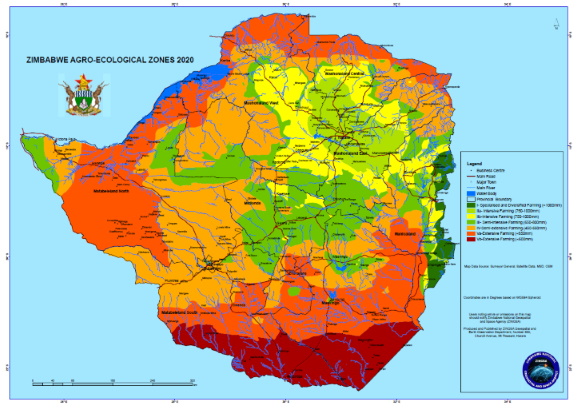ClimateThere is variation in climate change impacts across the country. Temperatures are increasing throughout the country, with slightly higher warming trends in the south and west. The timing and amount of rainfall are becoming increasingly uncertain. EconomyThese changes impact Zimbabwe’s economy which is primarily agro-based, with over 70 per cent of the population living in rural areas and dependant on climate-sensitive livelihoods such as arable farming and livestock rearing. Price fluctuations, non-functional markets and fragmented value chains, politically motivated decisions, and the need to feed a growing population worsen poverty and hinder food security, in particular for smallholder farmers. |

Agricultural production systems
Zimbabwe produces a variety of crops in its 5 different agroecological zones which include maize as predominant staple crop, as well as sorghum, millet and legumes to a lesser extent, and few industrial crops. The country rears a variety of livestock that include cattle, goats, sheep, pigs and chickens.
Most rural Zimbabweans live in semi-arid zones. Research shows they will suffer from the emerging impacts of climate change and variability, including disasters such as droughts, periodic flooding, disease outbreaks for humans, crops and livestock and loss of crop lands. To cope with negative climatic impacts, farming communities have moved deeper into marginal lands, unsustainably extracting natural resources and using unsuitable agricultural practices. This leads to degrading of the natural resource base and a narrowing of options for communities to adapt to future climate.
How can national policies take the context and diversity of local implementation into account? In the AgMIP CLARE project, regional and national studies are integrated to determine effective policy interventions.


